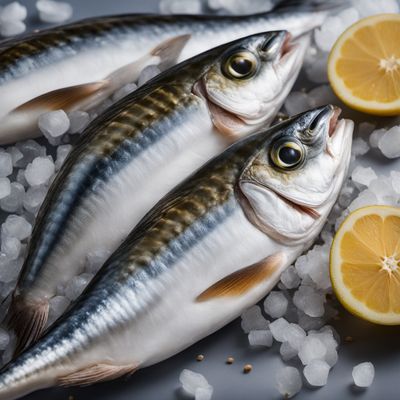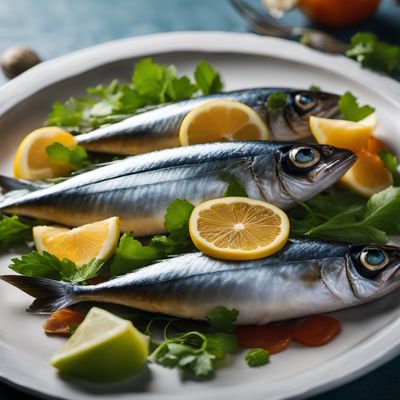
Ingredient
Mackerel, atlantic
"The Ocean's Nutritional Powerhouse: Atlantic Mackerel"
Atlantic mackerel is a small, oily fish with a streamlined body and silver-blue skin. It has a firm, meaty texture and a distinct flavor that is both rich and savory. The flesh is pinkish-white and flakes easily when cooked. This fish is known for its high oil content, which contributes to its rich taste and moist texture. It is often described as having a "meaty" flavor that is both mild and slightly sweet.
Origins and history
Atlantic mackerel is native to the North Atlantic Ocean and is found in abundance along the coasts of Europe and North America. It has been a staple food in many coastal communities for centuries, with evidence of its consumption dating back to ancient times. Mackerel has played a significant role in the culinary traditions of countries such as Portugal, Spain, and Norway, where it is often preserved by smoking or pickling.
Nutritional information
Atlantic mackerel is a nutritional powerhouse, packed with omega-3 fatty acids, protein, vitamin D, vitamin B12, selenium, and other essential nutrients. A 3.5-ounce (100-gram) serving of cooked mackerel provides approximately 305 calories, 20 grams of fat, and 30 grams of protein.
Allergens
Atlantic mackerel may cause allergic reactions in individuals with fish allergies.
How to select
When selecting Atlantic mackerel, look for fish that has bright, clear eyes, shiny skin, and a fresh, oceanic smell. The flesh should be firm and spring back when pressed. Avoid fish with dull eyes, discolored skin, or a strong fishy odor.
Storage recommendations
To maintain the freshness and quality of Atlantic mackerel, store it in the refrigerator at a temperature between 32°F (0°C) and 39°F (4°C). It is best to consume the fish within 1-2 days of purchase.
How to produce
Atlantic mackerel can be commercially fished or caught recreationally using fishing lines, nets, or traps. It is also possible to raise mackerel in aquaculture systems, although this is less common.
Preparation tips
Atlantic mackerel can be prepared in various ways, including grilling, baking, broiling, or pan-frying. It pairs well with citrus flavors, herbs like dill or parsley, and spices such as paprika or cayenne pepper. To enhance its flavor, marinating the fish for a short period before cooking can be beneficial. Remove the skin and bones before serving, as they can be tough and unpleasant to eat.
Culinary uses
Atlantic mackerel is commonly used in a variety of dishes, including grilled or smoked fillets, fish cakes, pâtés, and salads. It is also a popular choice for canning or pickling due to its rich flavor and oil content.
Availability
Atlantic mackerel is commonly available in coastal regions of Europe and North America, including countries such as Portugal, Spain, Norway, the United Kingdom, and the United States.


